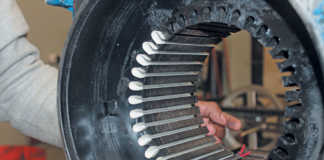
As regular readers of this column might remember, Luca Pacioli (1447-1517) can be considered the father of modern accounting. Published in 1494, his treatise Summa de arithmetica, geometria, proportioni et proportionalita is the first known text describing the double-entry bookkeeping system.
Double-entry bookkeeping is so named because every entry to an account requires a corresponding and opposite entry to a different account. This gives us debit and credit.
A Franciscan friar and mathematician who knew and worked with the great Leonardo da Vinci, Pacioli didn’t invent double-entry bookkeeping; he documented and codified the method used by merchants in Venice.
Still in place 500 years later
Remarkably, his system includes all the fundamental accounting principles still
used today. He described journals and ledgers. He warned against ‘going to sleep’ before the debits equalled the credits, the heart of the double-entry bookkeeping system.
His ledger showed assets (including receivables and inventories), liabilities, capital, income and expense accounts. He demonstrated year-end closing entries and described the purpose of a trial balance.
The fact that many of us still do not understand the basics of accounting is an indictment of the quality of education we received. Financial health never even got a show in. The time has come to change that.
There are many books and courses available to help with financial illiteracy, so I have no intention of giving bookkeeping lessons here. But there are some fundamental accounting principles that I managed to grasp early on in my farming career which I’d like to share.
The most basic of all is the difference between ‘balances’ and ‘flows’.
The balance
Find five photographs of yourself covering the period from your school-days to the present. Lay them out in chronological order. They represent personal ‘balance sheets’; snapshots of you at a particular point in time.
But, I can hear you saying, they don’t tell the whole story. True. They show the ‘outside’. What, then, is on the inside? What’s your level of education, for instance? What skills do you have? What’s your reputation? What onerous demands are staring you in the face, from growing children to ageing parents, and so on?
A well-prepared balance sheet attempts to portray an accurate snapshot of the business, including the ‘inside’, such as the value of all the time and effort spent in setting up the business, its reputation and standing in the community, and so forth.
It could also be something negative, such as a pending court case for which some cash should be put aside.
The preparation of an accurate balance sheet for a large and complex business is a challenging task, and even in today’s highly regulated accounting world, there is much room for error and manipulation.
The inside story of your business
Go back to your pictures. What happened between each of them is the ‘flow’. This is the equivalent of the income (and expenditure) statement and cash flow.
It describes what took place that caused the young person on the left to end up looking old and haggard like the one on the right!
The concept is really quite simple.
The balance sheet is an overview at a particular point. It could be any time, but it’s normally prepared at the end of the financial year. The income statement and cash movement in and out are the written history, the ‘flows’; this is what happened between the balance sheets and led them to look as they do.
We’ll have a look at some of Pacioli’s other principles in the weeks ahead











